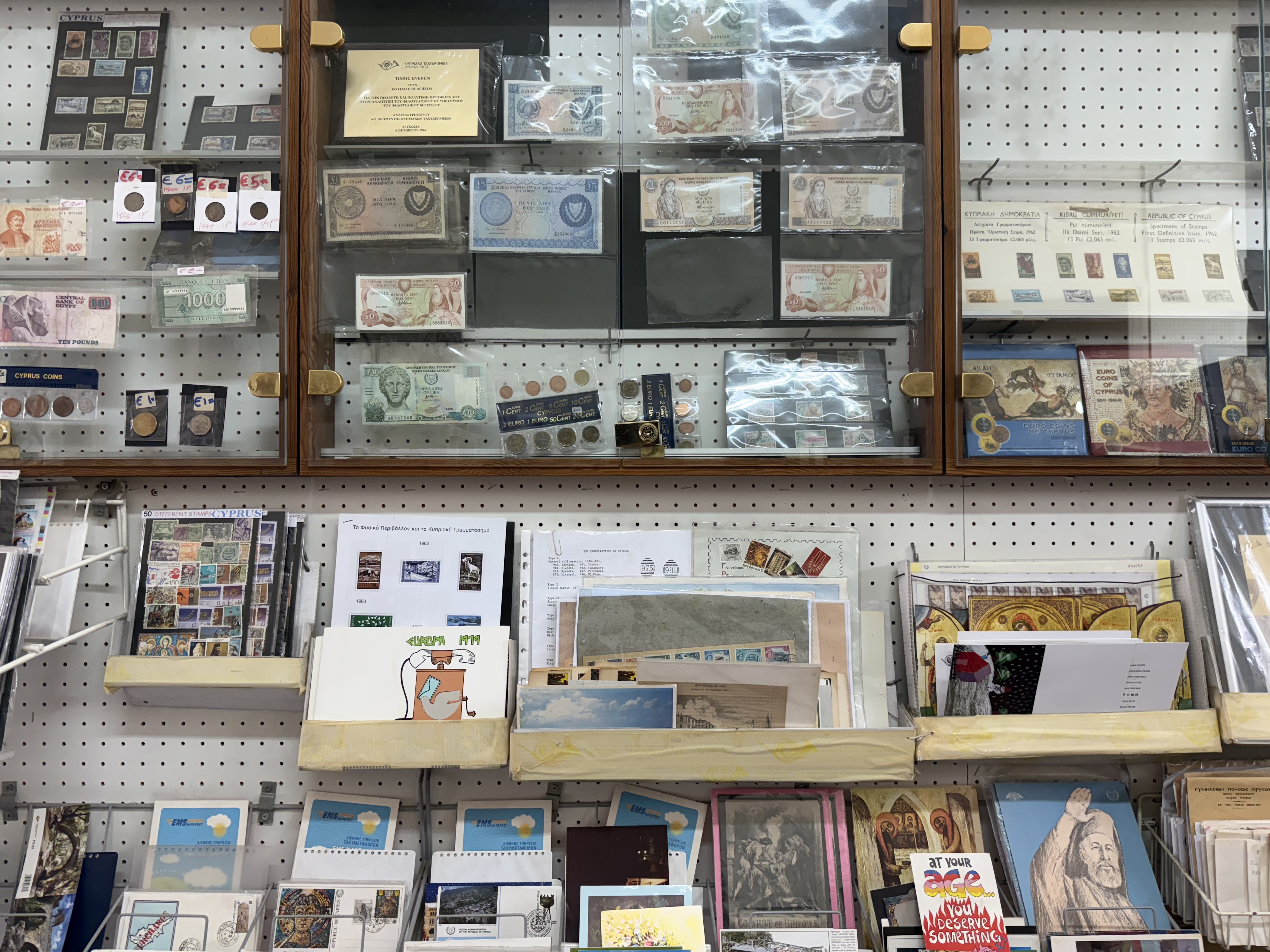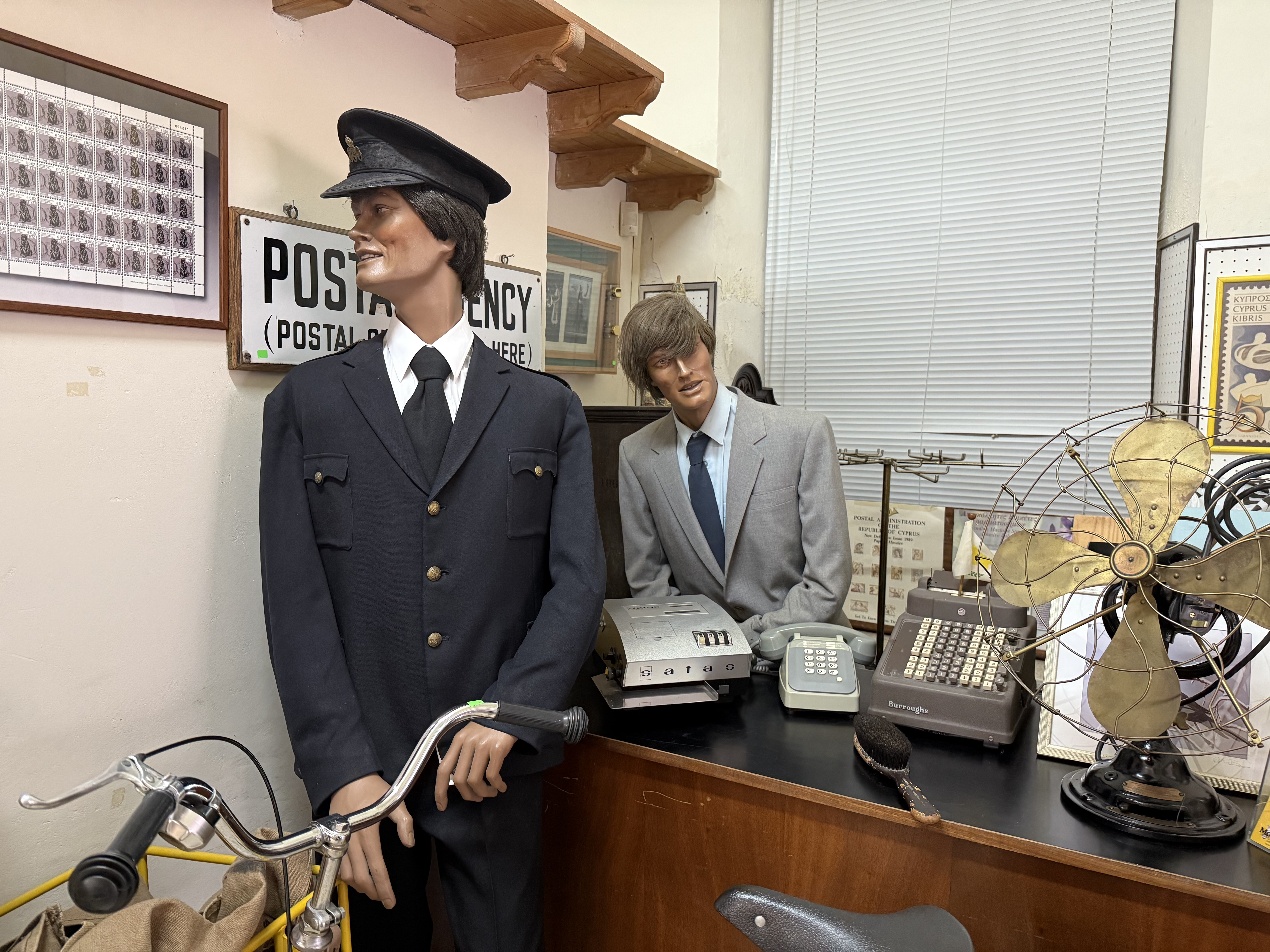The Postal Museum in Nicosia doesn’t have many visitors, but that seems the fate of most small collections worldwide
The door to the Postal Museum creaked open and then silence.
Instead of the soft hum of tourists flipping through postcards or the shuffling of school groups, I was greeted with silence so thick it pressed against the dusty glass cases.
Inside what one foreign travel writer once described as the “most boring museum ever” lies one of the world’s most comprehensive collections of stamps with an eclectic display of postcards, letters and mailboxes dating back to the 18th century. But, for a full hour, I wandered through rooms of stamps, mannequins and mailboxes, with only the sound of a distant clock ticking behind the reception desk.

Housed in a two-storey Ottoman-era mansion near the Trypiotis church in Nicosia’s old town, the Postal Museum is meant to honour Cyprus’ long and complex relationship with the written word.
Established in 1981, it holds an impressive collection: stamps dating from the British colonial period, postcards from the early 20th century, and yellow and red mailboxes once fixed along village streets. One glass case holds an 1880 Queen Victoria stamp, her head neatly overprinted with the word “CYPRUS”.
The museum’s layout follows a chronological arc, beginning with a small exhibit on the period of British rule and culminating in displays of modern Cypriot postage. Its first hall is dedicated to the British colonial era, with special edition stamps marking the beginning and end of each reign.
Further rooms trace the evolution of the island’s postal history through independence in 1960 to the present day. Special edition stamps commemorating the Europa mission, another one featuring reptiles of Cyprus, and a third featuring the logo of the international maritime and shipping conference in 1992 lay neatly behind plastic covers.
But while the materials are rich, the presentation felt quite sparse to me; placards are printed in 11-point font, affixed to static boards. The mannequins, frozen in mid-delivery, felt more eerie than educational. The museum assumed a familiarity with the world of philately – stamp collecting – that I presume few visitors possess.
Ploutis Loizou, the curator of the museum, warmly greeted me and kindly offered to guide me through the collection. He recounted the evolution of the island’s stamps with ease, from the reign of Queen Victoria to special-edition stamps created for the Republic’s independence from Britain and also pointed out the stamp collections and old coins that are available to purchase.
Loizou declined a request for further comment, and I could not locate a single other visitor for an interview.
However, it may not be just the postal museum facing this deafening silence.
According to data from the ministry of transport and works, in 2019, fewer than 83,000 people visited Cyprus’ state museums. That same year, over 1.2 million people visited archaeological sites. Tourism numbers are climbing, but they may not be translating into museum traffic. Many visitors flock to the island’s beaches and ruins, but may be bypassing the quieter places where stories are carefully preserved and narrated – often by the very people who lived them.
Globally, the situation mirrors Cyprus’. Unesco reported in 2020 that more than 10 per cent of museums worldwide may face permanent closure following the pandemic, with many never reopening their doors. The International Council of Museums (ICOM) emphasised that small museums, especially those with niche collections or limited digital infrastructure, were the most at risk.

While some institutions have successfully adapted by investing in virtual exhibits and outreach programmes, others – like the Cyprus Postal Museum – remain anchored in analog formats and largely overlooked. The gap between historical preservation and public engagement is growing.
The postal museum may not have the grandeur of larger institutions, but it certainly does preserve something valuable – it tells the story of Cyprus as a place of correspondence: a node in empires, a witness to wars and conflict, and eventually, a republic. These tiny, faded stamps offer insight into shifts of power, language, memory and national symbolism.
For the dedicated philatelist, the museum is a treasure. But for the average visitor, the stories remain locked behind panels, dependent on a guide who may one day no longer be there.
Without new efforts to reimagine how we present and protect these historical narratives, such institutions risk fading into obsolescence, and with them, the textures of everyday life that rarely make it into textbooks: postal routes that stitched distant villages together, the stamps that marked regime changes, envelopes that carried the weight of love, war, exile and return.
The postal museum is located at Agiou Savva 3b, 1015 Nicosia. It is open from 09.00 to 15.00 Monday through Friday and 09.00 to 13.00 on Saturdays.







Click here to change your cookie preferences